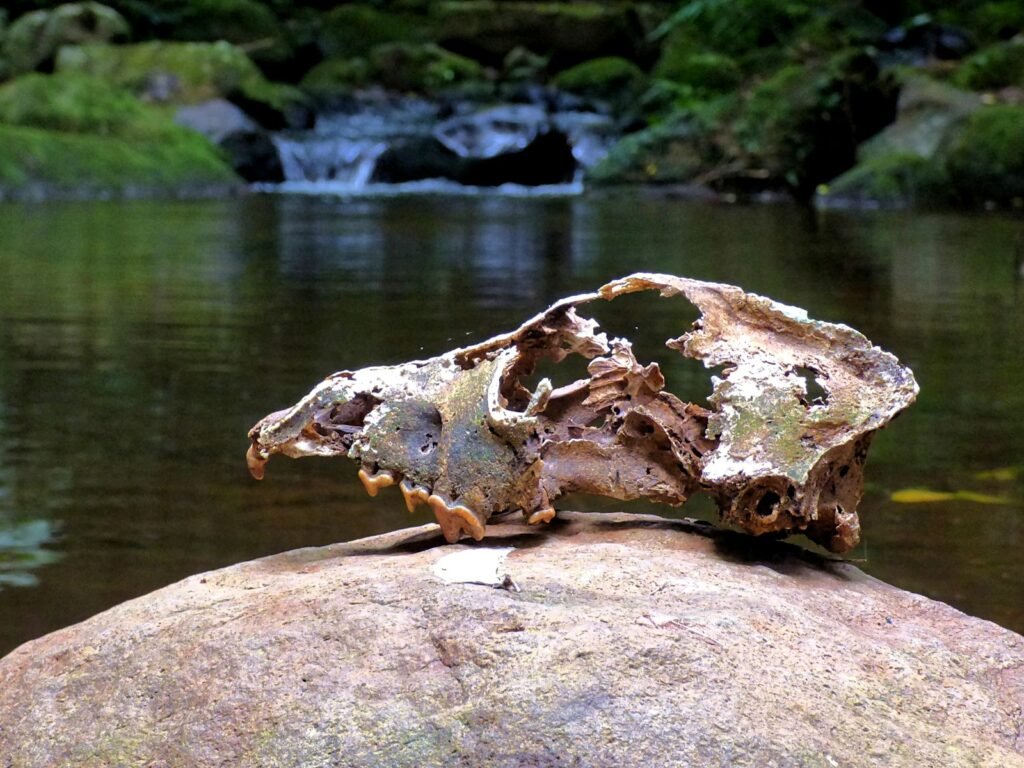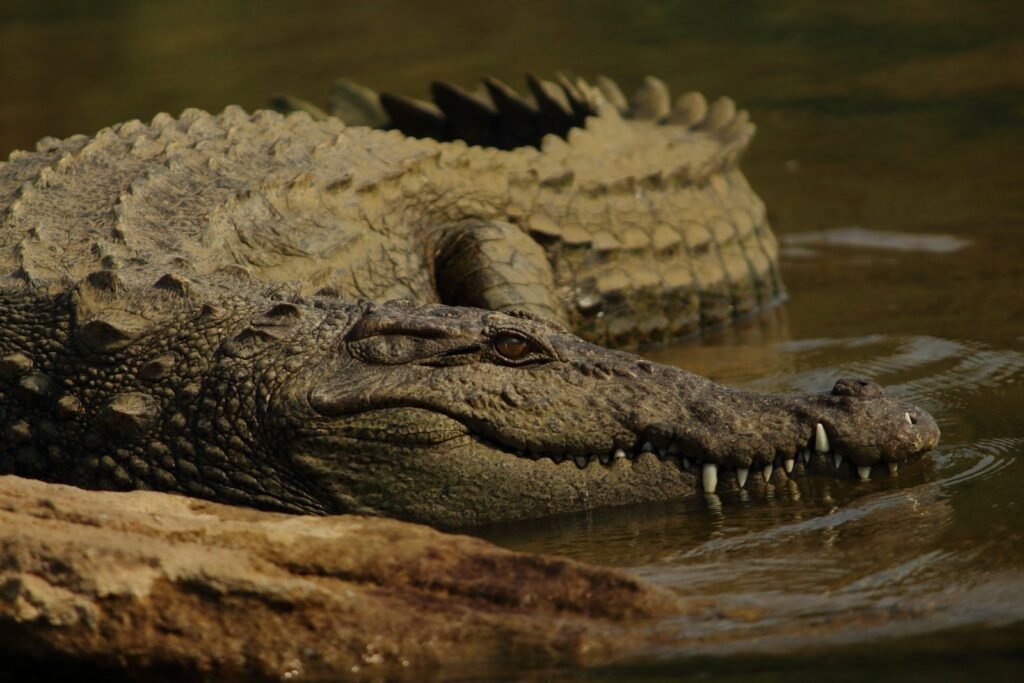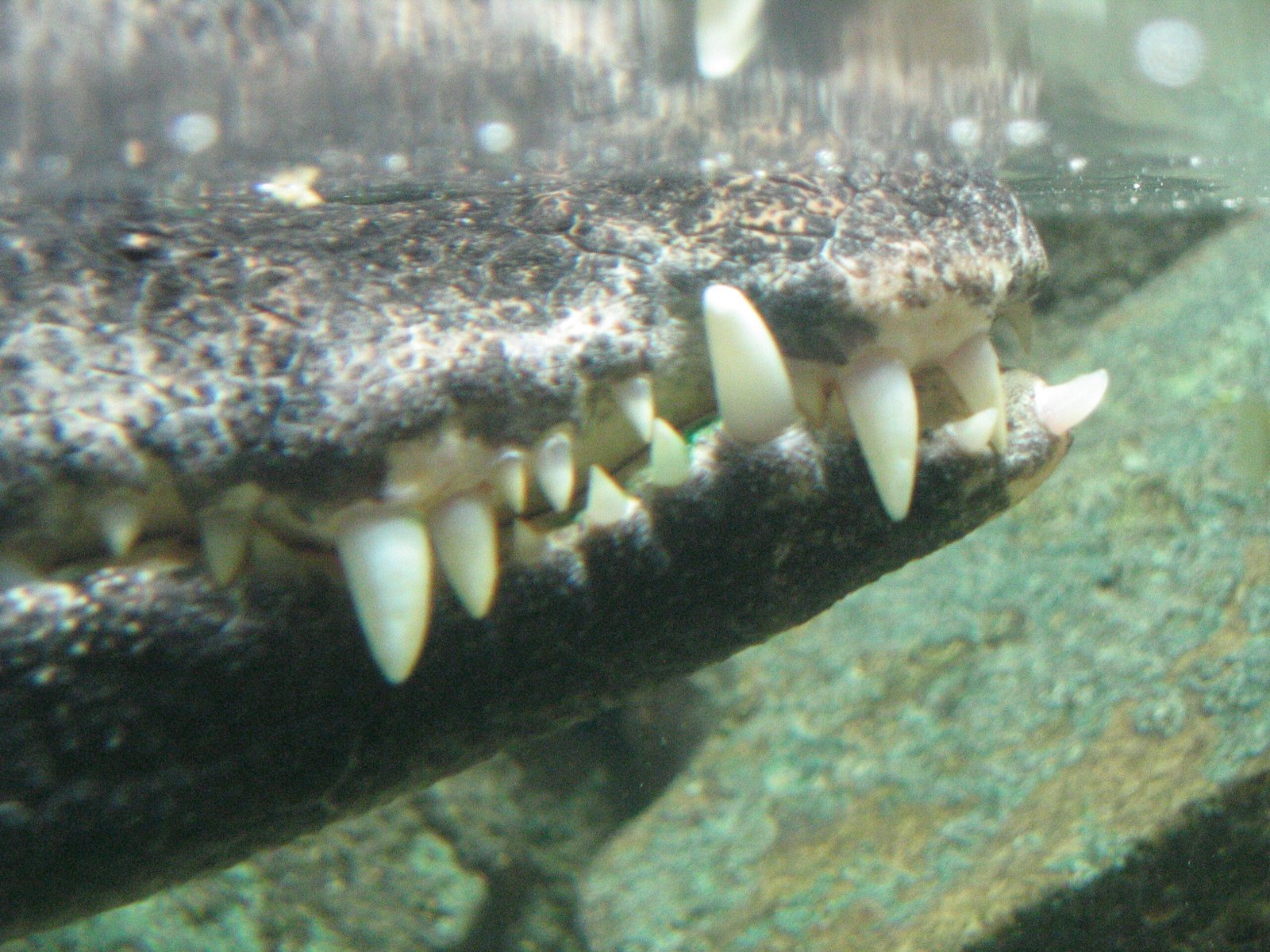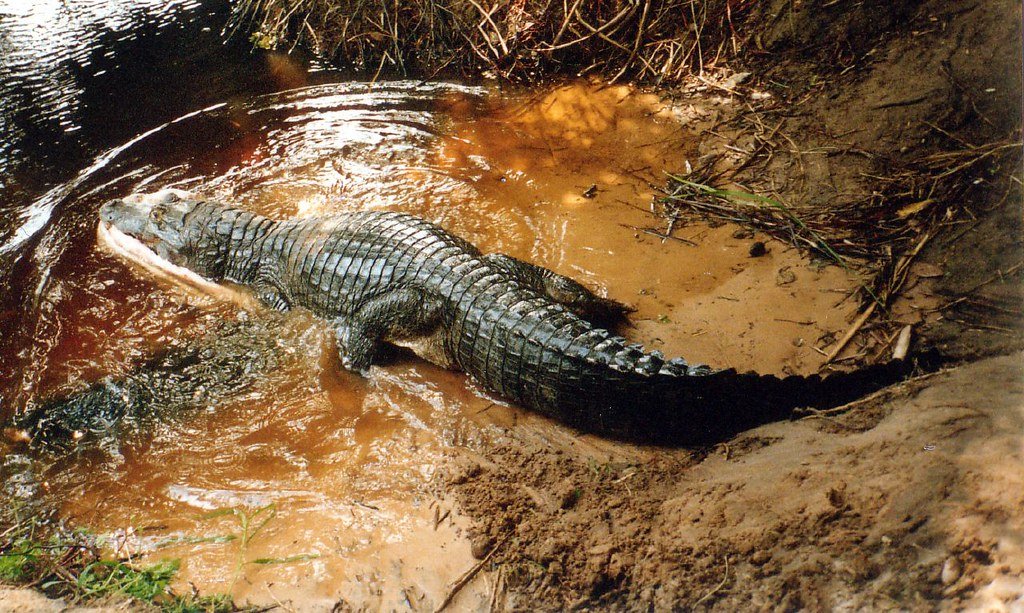Picture this: You’re standing at the edge of a murky swamp, watching what looks like a floating log drift silently through the dark water. Suddenly, that “log” explodes into action, massive jaws snapping shut with bone-crushing force. You’ve just witnessed one of nature’s most successful time travelers – a living remnant from the age of dinosaurs that has perfected the art of survival for over 200 million years. While T-Rex and Triceratops became museum displays, crocodiles kept ticking along like prehistoric clocks that never needed winding.
The Unlikely Time Travelers

Evolving around 200 million years in the Mesozoic epoch, crocodiles have far outlived the dinosaurs. Think about that for a moment – these scaly survivors have been perfecting their deadly craft since before the first flowers bloomed on Earth. Crocodilians have remained relatively unchanged for millions of years, giving them the nickname “living fossils.” It’s like nature hit the jackpot with the crocodile design and decided, “Why mess with perfection?” When it came to evolution, crocodiles obviously took their time. While other animals were racing to adapt and evolve, crocodiles were playing the ultimate long game. It seems the crocodiles arrived at a body plan that was very efficient and versatile enough that they didn’t need to change it in order to survive. They’re basically the Nokia phone of the animal kingdom – old-school, reliable, and nearly indestructible.
Shared Ancestry With the Terrible Lizards

Crocodilians and birds are members of the clade Archosauria. This ancient group, known as the “ruling reptiles,” gives us a fascinating glimpse into prehistoric family trees. Archosaurs, also known as the ruling reptiles, originated about 250 million years ago during the Carboniferous period. During the middle Triassic period, about 230 million years ago, archosaurs started to branch off in three evolutionary directions: dinosaurs, pterosaurs, and ancestral crocodiles. Imagine a prehistoric family reunion where crocodiles, dinosaurs, and flying reptiles all shared the same great-great-great-grandparents. Though dinosaurs and crocodiles have the common ancestor with the archosaur, they evolved separately. They’re like evolutionary cousins who took wildly different career paths – one group conquered the land and sky, while the other mastered the art of aquatic ambush.
The Skull That Tells a Story

Archosaurs are distinguished from other reptiles particularly by two sets of extra openings in the skull; the antorbital fenestra located in front of the animal’s eye socket and the mandibular fenestra on the jaw. These skull openings are like nature’s way of signing her work – a distinctive trademark that links crocodiles to their dinosaur relatives. The skull exhibits distinctly developed upper and lower temporal fenestrae (that is, openings behind the eye sockets); the teeth arise from sockets, and the roof of the skull lacks an opening for the parietal organ. Modern crocodiles carry these ancient architectural blueprints in their bones, making them living textbooks of prehistoric anatomy. Within the Archosauria, the crocodiles are a separate order, since they have developed a secondary bony palate, which encloses the nasal passage from the exterior nasal openings to the choanae (internal nostrils). This specialized feature allowed them to breathe while their mouths were submerged – a crucial adaptation for their aquatic lifestyle. This adaptation allowed the animal to breathe through its nostrils while its mouth was open underwater.
The Evolutionary Slow Lane

Stockdale looked back into the evolutionary history of crocodiles with an AI algorithm that gave estimates of evolution rates. What researchers discovered was absolutely fascinating – crocodiles weren’t just slow to evolve, they were practically standing still in evolutionary terms. The findings show that the limited diversity of crocodiles and their apparent lack of evolution is a result of a slow evolutionary rate. They found crocodiles achieved a punctuated equilibrium, or a sort of stasis in their evolutionary journey. While mammals and birds were frantically adapting to changing environments, crocodiles were like that one friend who finds a favorite restaurant and never wants to try anywhere else. In the same amount of time it took for crocodiles to get to where they are today, thousands of species of birds and lizards have evolved. The rate of their evolution is generally slow, but occasionally they evolve more quickly because the environment has changed.
Masters of Environmental Adaptation

In particular, this new research suggests that their evolution speeds up when the climate is warmer, and that their body size increases. Temperature wasn’t just about comfort for ancient crocodiles – it was their evolutionary gas pedal. He also found that prehistoric crocs tended to evolve more quickly in warmer environments, further proving that the environment had a significant effect on crocodile evolution. Crocodiles generally thrive better in warm conditions because they cannot control their body temperature and require warmth from the environment. The climate during the age of dinosaurs was warmer than it is today, and that may explain why there were many more varieties of crocodile than we see now. “Crocodiles are able to survive in a huge variety of environments, including rivers, swamps, estuaries and even the open ocean,” Stockdale said. “Lizard species seem to be more prescriptive, with each species specializing in a given ecological niche. They’re the ultimate generalists in a world of specialists.
Anatomy of a Perfect Predator

Despite their prehistoric look, crocodiles are among the more biologically complex reptiles. Unlike other reptiles, a crocodile has a cerebral cortex and a four-chambered heart. This isn’t your average cold-blooded reptile we’re talking about – crocodiles are packing some serious biological hardware. Crocodilians also have the functional equivalent of a diaphragm by incorporating muscles used for aquatic locomotion into respiration. Crocodilians have a four-chambered heart as opposed to the three-chambered heart found in other reptiles and amphibians. It’s like they got the deluxe upgrade package when other reptiles were still working with basic models. Crocodilians are among the most cognitively complex non-avian reptiles. Embryological studies of developing amniotes have shown similar brain structures in the telencephalon between crocodilians, mammals and birds. Accordingly, several behaviours that were once thought to be unique to mammals and birds have been recently discovered in crocodilians.
Jaws of Prehistoric Power

A 5.2 m (17 ft) long saltwater crocodile has been confirmed as having the strongest bite force ever recorded for an animal in a laboratory setting. It was able to apply a bite force value of 3,700 lbf (16,000 N), and thus surpassed the previous record of 2,125 lbf (9,450 N) made by a 3.9 m (13 ft) long American alligator. To put that in perspective, imagine a small car sitting on your finger – that’s roughly the pressure a large crocodile can exert with its jaws. Since crocodile anatomy has changed only slightly over the last 80 million years, current data on modern crocodilians can be used to estimate the bite force of extinct species. An 11-to-12-metre (36–39 ft) Deinosuchus would apply a force of 23,100 lbf (103,000 N), nearly twice that of the latest, higher bite force estimations of Tyrannosaurus (12,814 lbf (57,000 N)). The extraordinary bite of crocodilians is a result of their anatomy. The space for the jaw muscle in the skull is very large, which is easily visible from the outside as a bulge at each side. However, nature has a sense of humor – Despite the strong muscles to close the jaw, crocodiles have extremely small and weak muscles to open the jaw.
Teeth That Never Stop Coming

Crocodilians are polyphyodonts; they are able to replace each of their approximately 80 teeth up to 50 times in their 35-to-75-year lifespan. If you’ve ever worried about dental bills, crocodiles make it look easy – they’re basically running their own tooth factory. Crocodiles can have almost 60 teeth at any one time, and they can lose and replace teeth throughout their lives, potentially having over 2000 teeth during their lifetime. Crocodilians are homodonts, meaning each of their teeth are of the same type; they do not have different tooth types, such as canines and molars. While we humans get exactly two sets of teeth and have to make them last, crocodiles treat teeth like disposable razors. Crocodilian teeth can only hold onto prey, and food is swallowed unchewed. They’re not interested in savoring their meals – it’s all about the grab and gulp technique that’s served them well for millions of years.
Sensory Superpowers From the Past

Their sensory organs (eyes, ears, and nostrils) are positioned on the top of the head, allowing them to remain submerged while still monitoring their surroundings. This ingenious design allows crocodiles to become living submarines, with just their essential sensors breaking the surface. The Integumentary Sensory Organs (ISOs) are distributed across their skin, enhancing their ability to detect subtle changes in their environment. They can detect changes in water pressure, temperature, and even salinity. They replace their teeth up to 50 times throughout their life and they also have a cerebral cortex, which is vital for perception, memory and consciousness. They can hunt prey by following movement patterns, like when an animal goes to a body of water for a drink. Some crocs have been observed using sticks to lure birds in for the kill. This isn’t just prehistoric brutality – it’s calculated intelligence that’s been refined over millions of years.
Giants of the Cretaceous

Deinosuchus was one of the biggest prehistoric crocodiles that ever lived, growing to a whopping length of 33 feet from head to tail–but it was still dwarfed by the biggest crocodile ancestor of them all, the truly enormous Sarcosuchus. The king of the Cretaceous crocodiles was the enormous Sarcosuchus, dubbed “SuperCroc” by the media, which measured about 40 feet long from head to tail and weighed in the neighborhood of 10 tons. Picture a school bus with teeth, and you’re getting close to understanding these prehistoric monsters. Although Deinosuchus was far larger than any modern crocodile or alligator, with the largest adults measuring 10.6 meters (35 ft) in total length, its overall appearance was fairly similar to its smaller relatives. This was a completely different growth strategy than that of large dinosaurs, which reached adult size much more quickly and had shorter lifespans. Deinosuchus is generally thought to have employed hunting tactics similar to those of modern crocodilians, ambushing dinosaurs and other terrestrial animals at the water’s edge and then submerging them until they drowned.
Diverse Prehistoric Lifestyles

Mesozoic crocodylomorphs had a much greater diversity of forms than modern crocodilians; they became small, fast-moving insectivores, specialist fish-eaters, marine and terrestrial carnivores, and herbivores. But other physical traits of Triassic- and Jurassic-era crocodiles, such as bipedal postures and vegetarian diets, were quite distinctive. “Ancient crocodiles came in a dizzyingly array of forms. They were adapted to running on land, swimming in the water, snapping fish, and even chewing plants,” said Pierce. “Our study shows that these very different ways of living evolved incredibly fast, allowing extinct crocodiles to rapidly thrive and dominate novel ecological niches over many millions of years.” ‘But others were very small, fleet-footed animals that were probably preying on things like insects. There were even herbivorous crocodilians of various types, with very complicated – almost mammal-like – teeth, that might have been chewing plants before swallowing.’ Some ancient crocodiles were like the Swiss Army knives of the reptile world – ready for any ecological niche that opened up.
Marine Crocodile Innovations

The crocodiles that were most highly adapted for ocean life were the metriorhyn-chids. They had replaced their webbed reptilian feet with paddles. The rear paddles were larger than the front paddles. Some marine crocodiles showed a reduction in body armor, especially on the back. Protective armor on the back was a holdover from their land-dwelling days and was unnecessary in the water. Losing armor would have also lightened the body and made it more streamlined for swimming. This ancient predator was characterized by its un-crocodile-like lack of armor (its smooth skin probably resembled that of its fellow marine reptiles, the ichthyosaurs, to which it was only distantly related) and its lightweight, porous skull, which presumably enabled it to poke its head out of the surface of the water while the rest of its body floated underneath at a 45-degree angle. One of the odd things about Metriorhynchus (Greek for “moderate snout”) is that it seems to have possessed relatively advanced salt glands, a feature of certain marine creatures that allows them to “drink” salt water as well as eat unusually salty prey without dehydrating. These ocean-going crocodiles were pushing the boundaries of what it meant to be a crocodile, adapting to life in the vast prehistoric seas.
Survivors of Mass Extinction

Evolutionary biologists suspect that crocodiles’ aquatic nature may have helped them survive the theoretical asteroid impact that led to the extinction of dinosaurs. “When the asteorid hit, and food chains became broken, the dinosaurs’ high-energy lifestyle was not sustainable,” Stockdale said. “But the crocodile’s was.” No one knows why crocs lived when so much died, but their freshwater habitat is one explanation: Freshwater species generally did better during the K-T event than did marine animals, which lost extensive shallow habitat as sea level dropped. Their wide-ranging diet and cold-blooded ability to go long periods without food may have helped as well. This versatility could be one explanation why crocodiles survived the meteor impact at the end of the Cretaceous period, in which the dinosaurs perished. Being able to draw energy from the sun means they do not need to eat as much as a warm-blooded animal like a bird or a mammal. While the world burned around them, crocodiles basically went into power-saving mode and waited it out.




